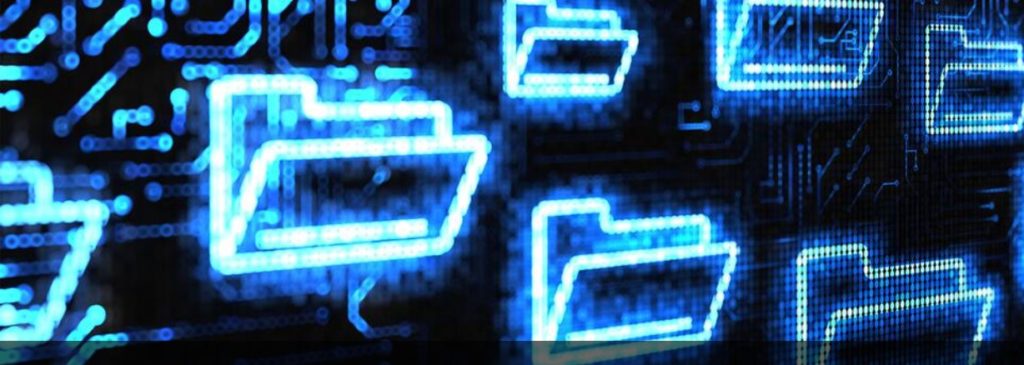
THE VIRTUAL ABODE OF INFORMATION AND ITS CHALLENGES
Communication, a revolutionary aspect of being, essentially determines the trajectory of civilizations. Words, symbols, speech, art, are all crucial in telling the story of human evolution. To save these from being lost, humans sort ways to contain them. From rock art to engravings, tree bark, leaf, brass, and copper engravings; our efforts at holding on tight to our histories, ideas, and philosophies have been multifold. But all that is earthly wears off and all that has substance consumes space. Preserving and even recreating what we gathered over centuries on a physical level is surely a tedious task. Accessing, updating, and preserving archives all became a challenge in a world that struggled to accommodate and appease the exaggerated needs of humankind. Documentation, the act of recovering, restoring, and preserving, is also an effort at acknowledging, respecting, valuing history and ideas. But whose histories are being documented, the oppressor or the oppressed? In the midst of the rigorous act of documentation adequate emphasis is not placed on the politics of underrepresented narratives. The politics of documentation and the spatial occupation of documents then become topics of great significance.

Every other moment becomes history, every other second is witness to a new idea, every other minute is witness to new life. Thus, the demand on space to feed the growing populace is shooting up every other half-hour and the bulkiness of physical documents, combined with its fragility, plausible threats posed to physical storage areas (like floods, fire hazards, and other disasters) and its preservation are daunting tasks. Not to mention the politics of accessibility of physical documents. Until the IT revolution, our most advanced forms of physical repositories were libraries, museums, and file rooms. But humankind has significantly advanced at solving its problems. Digitization has been one such revolutionizing moment of human history that offered just too many solutions to our day-to-day problems, including the question of the immensity of physical preservation of documents. Not that the process of digitally archiving information is a click away, but digital archiving is a process one ought to be careful about, as it requires the same care and caution as offline preservation demands. In fact, the demands and skillsets required for archiving have only advanced. From verification of the sources to assessing its credibility; from using the most advanced application to scan documents, to ensuring they are cataloged in the most technically accurate manner, such that it is accessible to anyone; from updating the system that carries the documents to migrating it as and when the technology of storage advances; from navigating through copyright to preserving online resources from being manipulated, digital archiving is a solution as well as an exigency.

We are still at a very nascent stage of digitally archiving audio-visuals, documents, and images. At a stage where anything and everything will flood a simple google search for something as simple as ‘apple’; a stage where the data retrieval and loss are commonplace digital flaws; a stage where digitization is too young to realize and act upon the politics of representation and documentation of suppressed narratives.
Nothing material or worldly can survive the curse-eye of time. No digitization can be the absolute solution to the demands of documentation. Surviving each wave of challenges with available resources and adapting to change seems to be the only permanent solution.
One another factor that thwarts the process of digital archiving is copyright issues. Copyright laws that exist for offline materials thwart their digital inclusion. The lack of vision, quick action, adaptability on the part of lawmakers are the reason why so many offline materials are still digitally unavailable. This further promotes content piracy, as they are made available online, illegally. But some pertinent questions that we ought to address are- Who has the right to deal with the intellectual property of another? How to ensure that the copyrighted material is not duplicated and manipulated? This is where organizational and governmental policies become the guiding light for the preservation of authenticity. An understanding between preservation institutions and the right-holders to relax the reins of copyright laws for carrying out essential digital preservation activities is also equally important. While ensuring that, the involvement of legislative structures in facilitating digital preservation shouldn’t jeopardize the will of the right-holders or affect the market vision for resources.
In today’s fast-paced world, digital archiving is a very essential exercise. With humans outsmarting each other and the existing technologies day-by-day, both legally and illegally, there is an increased need for active governmental and tech collaboration to ensure that intellectual properties are respected and legally preserved from manhandling. This is the age of quick access and door-to-door services, anything could be lost and gained in a click, so there is a need to tighten the reins while sitting back to enjoy the show.

